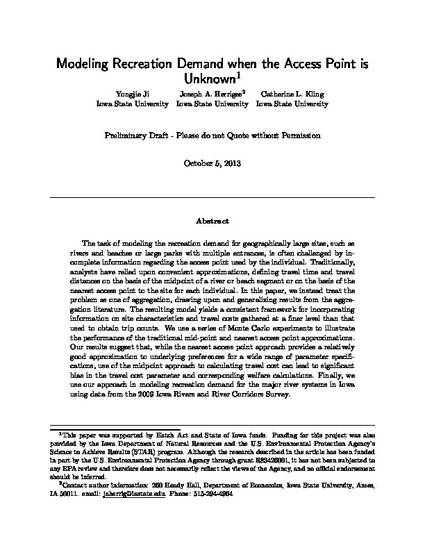
Not observing where an individual enters a geographically large recreation area complicates the task of modeling recreation demand. Traditionally, analysts have arbitrarily defined distances on the basis of the midpoint of a river or beach segment or on the basis of the nearest access point. In this article, we draw on the aggregation literature to generate a consistent framework for incorporating information on site characteristics and travel costs gathered at a finer level than that used to obtain trip counts. We use Monte Carlo experiments to illustrate the performance of the traditional midpoint and nearest access point approximations. Our results suggest that, while the nearest access point approach often provides a good approximation to underlying preferences, use of the midpoint approach can lead to significant bias in the travel cost parameter and corresponding welfare calculations. Finally, we use our approach to model recreation demand for the major river systems in Iowa using data from the 2009 Iowa Rivers and River Corridors Survey.
Available at: http://works.bepress.com/catherine_kling/97/

This is a working paper of an article from American Journal of Agricultural Economics, 98(3) 2016; 860-880. Doi: 10.1093/ajae/aav096.